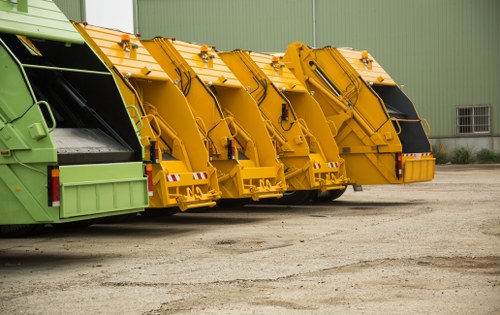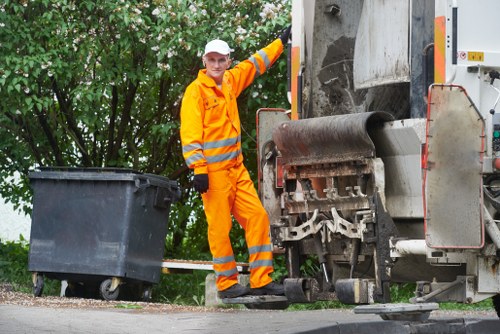Understanding Flat Clearance in Bow: A Comprehensive Guide

Flat clearance in bow is a critical aspect of boat design and performance. It refers to the space between the bow of a boat and the waterline when the vessel is at rest or under specific conditions. Proper flat clearance ensures optimal handling, stability, and safety on the water.
Achieving the right flat clearance involves a combination of factors, including hull design, weight distribution, and environmental conditions. Mariners and boat builders must consider these elements carefully to enhance the vessel's performance and longevity.
In this guide, we will delve into the intricacies of flat clearance in bow, exploring its significance, how to measure it, factors influencing it, and maintenance tips to keep your boat in top condition.

The Importance of Flat Clearance in Bow
Flat clearance plays a pivotal role in the overall performance of a boat. It affects how the vessel interacts with water, especially during maneuvers such as turning, accelerating, or cruising at high speeds.
Proper flat clearance can enhance the boat's ability to cut through waves, reducing drag and improving fuel efficiency. Additionally, it contributes to the vessel's stability, preventing excessive rocking and ensuring a smoother ride.
Neglecting flat clearance can lead to various issues, including increased wear and tear on the hull, compromised safety, and diminished performance. Therefore, understanding and maintaining appropriate flat clearance is essential for any boat owner.

Measuring Flat Clearance in Bow
Tools and Equipment
Accurately measuring flat clearance requires the right tools. Common instruments include a tailor's level, measuring tape, and a fixed reference point on the hull.
Using a level ensures that the boat is on a flat surface, preventing skewed measurements. The measuring tape helps quantify the exact clearance distance, while the reference point serves as a consistent marker for repeated measurements.
For more precise measurements, advanced tools like digital levels or laser measuring devices can be employed, especially in professional boat building and maintenance settings.

Factors Affecting Flat Clearance
Hull Design
The shape and structure of the hull significantly influence flat clearance. A flatter hull typically offers more clearance, enhancing stability and speed. Conversely, a deeper hull may reduce clearance but provide better navigation in rough waters.
- Planing Hulls: Designed to rise and glide on top of the water at higher speeds, offering greater flat clearance.
- Displacement Hulls: Move through the water, maintaining a more consistent clearance but with increased drag.
- Catamarans: Feature multiple hulls, distributing weight and optimizing clearance for better performance.
Weight Distribution
Proper weight distribution across the boat affects how the bow sits in the water. An uneven load can cause the bow to dip, reducing flat clearance and potentially leading to dangerous situations.
Environmental Conditions
Weather and water conditions, such as waves, tides, and currents, can impact flat clearance. Understanding these factors helps in adjusting the boat's configuration for optimal performance.

Maintaining Optimal Flat Clearance
Regular Inspections
Frequent checks of the hull and weight distribution ensure that flat clearance remains within desired parameters. Look for signs of wear, damage, or shifting loads that could affect clearance.
Using a consistent measurement routine, especially before and after trips, helps in early detection of issues that might compromise safety and performance.
Adjusting Weight Distribution
Ensure that heavy items are stored low and centered to maintain balance. Avoid overloading the bow, which can reduce flat clearance and affect handling.
Hull Maintenance
Regular cleaning and maintenance of the hull prevent the buildup of marine growth and other factors that can decrease flat clearance. Protective coatings can also enhance durability and performance.
Benefits of Proper Flat Clearance
Maintaining the correct flat clearance in bow offers numerous advantages:
- Improved Stability: Ensures the boat remains steady, reducing the risk of capsizing.
- Enhanced Performance: Reduces drag, allowing for higher speeds and better fuel efficiency.
- Increased Safety: Minimizes the chances of the bow submerging unexpectedly, especially in rough waters.
- Longevity of the Hull: Prevents excessive wear and tear, extending the lifespan of the boat.
- Better Handling: Facilitates smoother turns and maneuvers, enhancing the overall boating experience.
Common Challenges and Solutions
Uneven Weight Distribution
One of the most common challenges affecting flat clearance is uneven weight distribution. This can be addressed by reorganizing the cargo and ensuring that heavy items are evenly spaced.
Solution:
- Distribute weight evenly across the boat.
- Secure heavy items to prevent shifting during movement.
- Regularly assess and adjust the load as needed.
Hull Damage
Damage to the hull can compromise flat clearance by altering the boat's shape. Small cracks or dents may allow water to accumulate, affecting buoyancy.
Solution:
- Conduct regular hull inspections for signs of damage.
- Address minor damages immediately to prevent worsening.
- Consult professional boat repair services for significant repairs.
Environmental Factors
Changing water levels and weather conditions can temporarily affect flat clearance. Being aware of these factors helps in making necessary adjustments.
Solution:
- Monitor weather forecasts before heading out.
- Adjust weight distribution based on current conditions.
- Plan routes that accommodate environmental changes.
Advanced Techniques for Optimizing Flat Clearance
For those looking to take flat clearance optimization further, several advanced techniques can be employed:
Dynamic Weight Balancing
Using onboard systems to dynamically adjust weight distribution in real-time can significantly enhance flat clearance and overall stability.
Hydrodynamic Enhancements
Incorporating hydrodynamic features such as wave deflectors and keels can improve how the boat interacts with water, optimizing flat clearance.
Use of Lightweight Materials
Employing lightweight materials in the boat's construction reduces overall weight, allowing for greater flat clearance without compromising strength.
Technology Integration
Integrating sensors and monitoring systems can provide real-time data on flat clearance, enabling prompt adjustments and informed decision-making.
Case Studies: Flat Clearance in Various Boat Types
Fishing Boats
Fishing boats often require specific flat clearance to navigate shallow waters and maintain stability while handling heavy catches.
Sailing Yachts
Sailing yachts benefit from optimized flat clearance to enhance speed and maneuverability, especially during races.
Recreational Crafts
Recreational boats focus on comfort and ease of handling, with flat clearance playing a key role in ensuring a smooth and enjoyable experience.
Future Trends in Flat Clearance Management
The future of flat clearance management is leaning towards increased automation and smart technologies. Innovations such as AI-driven balance systems and advanced materials promise to revolutionize how flat clearance is maintained and optimized.
As the boating industry continues to evolve, staying informed about these trends will ensure that boat owners can leverage new technologies to enhance safety and performance.
Embracing Sustainable Practices
Incorporating sustainable practices in hull design and maintenance can lead to more efficient flat clearance management, reducing environmental impact while improving vessel performance.
Integration with Smart Systems
The integration of smart systems allows for real-time monitoring and adjustments, providing boaters with greater control and peace of mind.
Conclusion
Flat clearance in bow is a fundamental aspect of boat design and operation that significantly impacts performance, safety, and longevity. By understanding the factors that influence flat clearance and implementing effective maintenance practices, boat owners can ensure their vessels operate at peak efficiency.
Whether you are a seasoned mariner or a recreational boater, paying attention to flat clearance can enhance your boating experience and contribute to the overall health of your boat.
Ready to optimize your boat's performance? Contact us today or book your service now to ensure your vessel maintains the perfect flat clearance for all your maritime adventures.